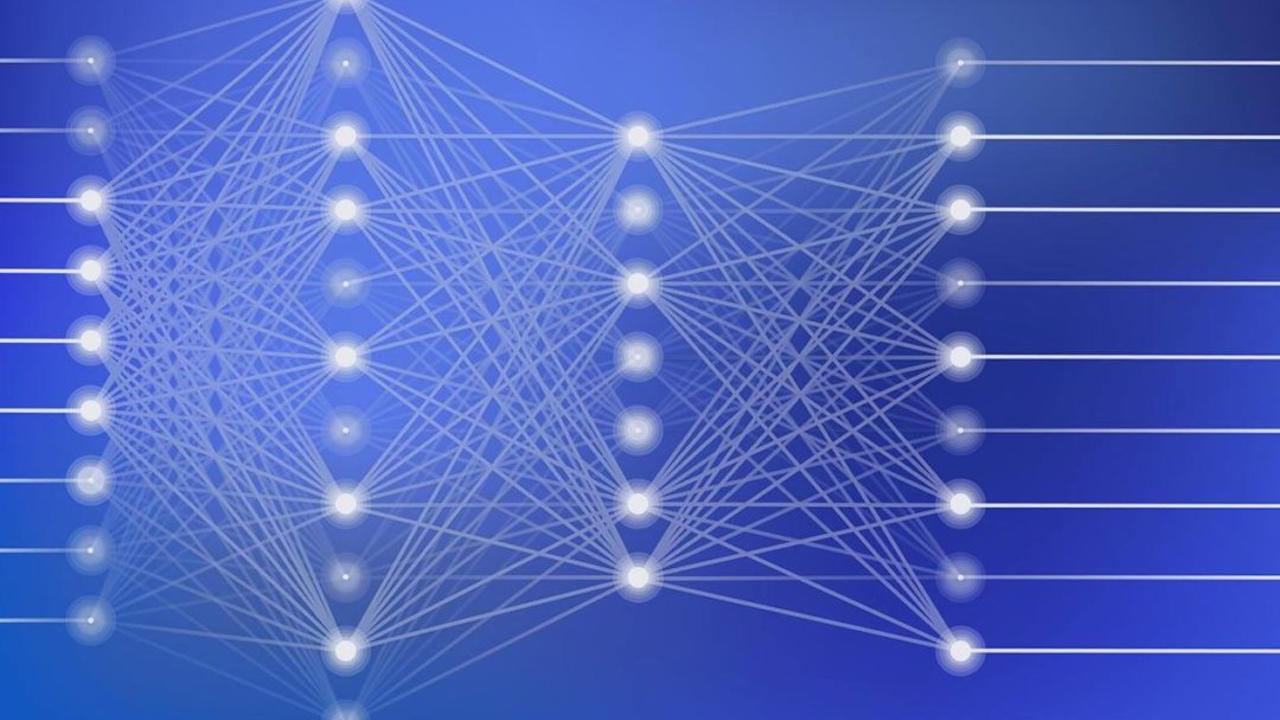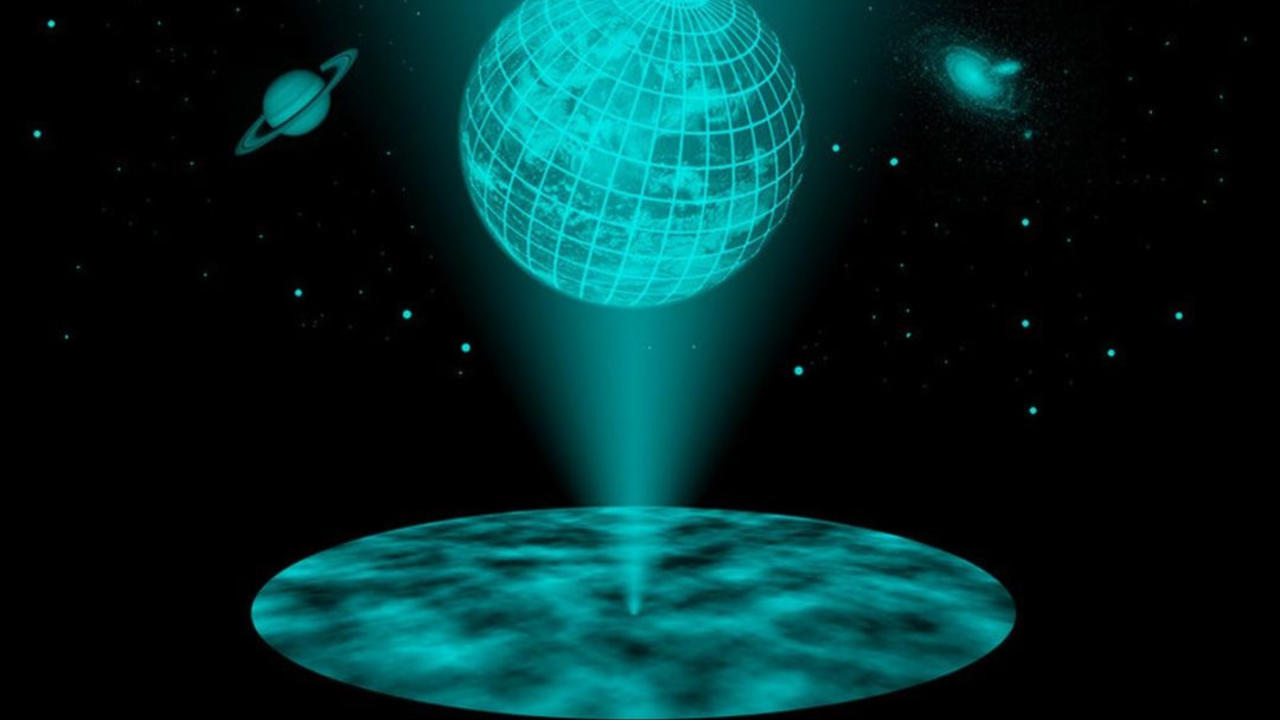Science News
& Faculty Articles
Quantum Computing via Electroluminescence

By Dr. Amira Val Baker, Resonance Science Foundation Astrophysicist
The first steps to achieving efficient electroluminescence necessary for quantum computing have just been made.
Quantum computers encode information in quantum bits otherwise known as qubits. These qubits can exist in the form of a photon or an electron, where the polarisation state of the photon or the spin state of the electron is taken as two bits of information. However, as opposed to classical bits, qubits can also exist in a superposition of states which allows the computer to process significantly more information and at a faster rate. This rate is limited by the transfer of information, which for an electron-spin qubit has so far proven difficult. Currently this has been achieved for distances up to millimetre scales, which although large from the qubit’s perspective, it is too small for practical applications.
To achieve the long-distance kilometre-scale transfer of quantum information encoded as...
Fractal Pattern in a Quantum Material Confirmed for the First Time!

Image by: Arkadiusz Jadczyk
By Dr. Inés Urdaneta / Physicist at Resonance Science Foundation
The word fractal has become increasingly popular, although the concept started more than two centuries ago in the 17th century with prominent and prolific mathematician and philosopher Gottfried Wilhelm Leibnitz. Leibnitz is believed to have addressed for the first time the notion of recursive self-similarity, and it wasn’t until 1960 that the concept was formally stabilized both theoretically and practically, through the mathematical development and computerized visualizations by Benoit Mandelbrot, who settled on the name “fractal”.
Fractals are defined mainly by three characteristics:
- Self-similarity: identical or very similar shapes and forms at all scales.
- Iteration: a recursive relationship limited only by computer capacity. With sufficiently high performance, the iterations could be infinite. This allows for very detailed shapes at every scale, that modify...
Artificial Intelligence Meets Quantum Physics

By Dr. Inés Urdaneta / Physicist at Resonance Science Foundation
As many theoretical and computational chemists and physicists know, quantum chemical calculations involving more than an electron and nuclei are very difficult to solve. They belong to a field called many body problems and require an extensive amount of computational infrastructure and hours of calculations depending on the size (the number of particles) of the system.
Here is where artificial intelligence – a combination of artificial neural networks and machine learning – comes into play. Neural networks have been around for more than 50 years, and they are more actualized than ever before. This is because they can learn through something called backward propagation, reaching a high level of predictability and increasing accuracy by training the network.
Quantum theoretical models, together with their computational packages, have been outstandingly successful in describing the quantum regime. While...
Between the Generalized Holographic Model and Data Science

By Dr. Inés Urdaneta / Physicist at Resonance Science Foundation
A couple of months ago, I presented a talk at the Benemerita Universidad Autonoma de Puebla’s Physics Institute (IFUAP), the topic being the Generalized Holographic Theory developed by Nassim Haramein. The invitation was serendipity; Haramein’s Holographic model prediction of the proton muonic radius – within experimental precision – had just been confirmed by the latest electronic hydrogen measurements from Bezginov et al. 2019. These measurements also confirmed that the standard model is off by 4%, way below experimental certitude.
I wasn’t sure which frame would fit best as an introduction to the subject for the presentation. Should I start with black hole thermodynamics, or the holographic principle? Despite the pertinence of both these topics, neither quite captured the dimension of the concern I had. The unified model demonstrates scaling from the Planck – and even...
Sound has Mass and thus, Gravity?

By Dr. Inés Urdaneta / Physicist at Resonance Science Foundation
In order for sound to be affected by gravity and to exercise gravity, it has to carry some mass of its own. But our common observations showed that sound is vibration traveling through media; energy traveling through material carrying no mass of its own. Until now, intuitively we see that the mass, through which the sound wave or vibration is traveling, must affect the speed and propagation of the sound wave through that media. Sound waves travel at different speeds in different mediums — water, oil, wood. The displacement from an equilibrium position of mass (atoms in a material) is perceived as sound. Seems everything is understood, right? Well, here is where the piece that’s missing comes into play: the energy promoting the displacement of the atoms carries mass of its own! That’s what the results of the research presented below conclude.
Let’s see how… the atoms in a material...
Physicist Nassim Haramein’s Prediction that the Universe is Rotating Receives a Second Strong Observational Confirmation

by
“…there is currently no explanation why the axes of quasars are aligned with the axis of the large group in which they are embedded” – Damien Hutsemékers, astronomer, University of Liège in Belgium
In the Resonance Science Foundation article The Rotating Universe, the evidence for a large-scale spatial coherence of the spin axes of quasars spanning mega parsecs (billions of light years) was reported. This was the first incontrovertible evidence of a cosmological-scale structure, or anisotropy, of the universe—following the controversial findings of dark flow, the axis of evil, the great wall and great voids, and the great cold spot.
Such large-scale structure is problematic to most cosmological models because the universe is assumed to be isotropic and homogeneous; in fact, this is so central to cosmological modeling that it is called the cosmological principle. Any...
Does Information Carry Mass?

By Dr. Inés Urdaneta / Physicist at Resonance Science Foundation
If information carries mass, could it be the dark matter physicists are craving?
The existence of dark energy and dark matter was inferred in order to correctly predict the expansion of the universe and the rotational velocity of galaxies. In this view, dark energy could be the source of the centrifugal force expanding the universe (it is what accounts for the Hubble constant in the leading theories), while dark matter could be the centripetal force (an additional gravity source) necessary to stabilize galaxies and clusters of galaxies, since there isn’t enough ordinary mass to keep them together. Among other hypotheses, dark energy and dark matter are believed to be related to the vacuum fluctuations, and huge efforts have been devoted to detecting it. The fact that no evidence has yet been found calls for a change of perspective that could be due to information theory.
How could we measure the mass of...
A Deeper Look into Black Holes

by Dr.
A deeper look into one of the most intriguing objects has just been revealed.
Black holes are typically observed by the light given off by the surrounding material, such as accretion disks or high velocity jets known as quasars. In 2015, this was extended to gravitational waves when the first gravitational wave was detected from the merger of a pair of black holes.
Then, last year the first direct picture of a black hole was revealed which captured the shadow of the black hole on the accretion disc. Read more here.
Now a recent international study, led by Dr William Alston of the Cambridge University, has taken it one step further, allowing us to peer into a black hole deeper than ever before.
Utilizing a technique known as X-ray reverberation mapping, the team of scientists set about observing the highly variable active galactic nuclei (AGN) IRAS 13224-3809. Located a mere billion light years away, the bright AGN...
Neurons Act Not As Simple Logic Gates, But As Complex, Multi-Unit Processing Systems

by
A study published in the journal Science has upended 80 years of conventional wisdom in computational neuroscience that has modeled the neuron as a simple point-like node in a system, integrating signals and passing them along. This neuron-as-integrator model, also known as the “dumb” neuron model, has severely restricted the conception of what a neuron is capable of doing, and hence how neuronal networks and the brain as a whole functions.
This has not only impeded the development of a complete understanding of neuronal activity in the higher brain regions of the cortex, but it has also adversely affected computer science, significantly limiting the development of neuromorphic computational networks because they have been based on an incomplete model. Empirical investigations are now suggesting that scientists re-evaluate neuronal information processing as a much more complex system—one that may not have...
The Rotating Universe

By William Brown, Resonance Science Foundation Research Scientist
When looking back into the deep past of the Universe, which means looking out over vast cosmological distances of space, there are observed a peculiar set of galaxies emitting a tremendous amount of energy. These early galaxies, known variously as quasars, blazars, radio galaxies and radio-loud quasars, are all bodies classified as active galactic nuclei. These objects are some of the most energetic phenomena in the universe, if the name blazar was not at all evident of this fact. Active galactic nuclei represent a confirmation of physicist Nassim Haramein’s prediction that black holes are the spacetime structure that forms the seed around which galaxies and stars form. Indeed, it is now widely understood that the early formation of galaxies, producing active galactic nuclei, are in fact due to the action of supermassive black holes – black holes in upwards of a million to a billion solar masses.
The...



